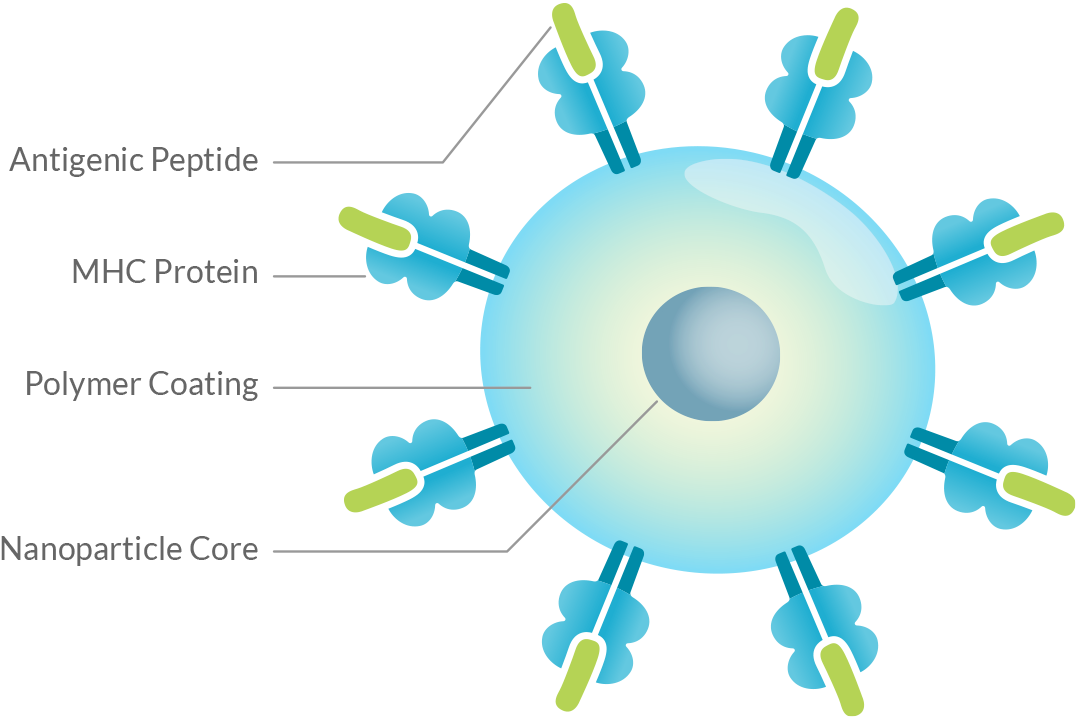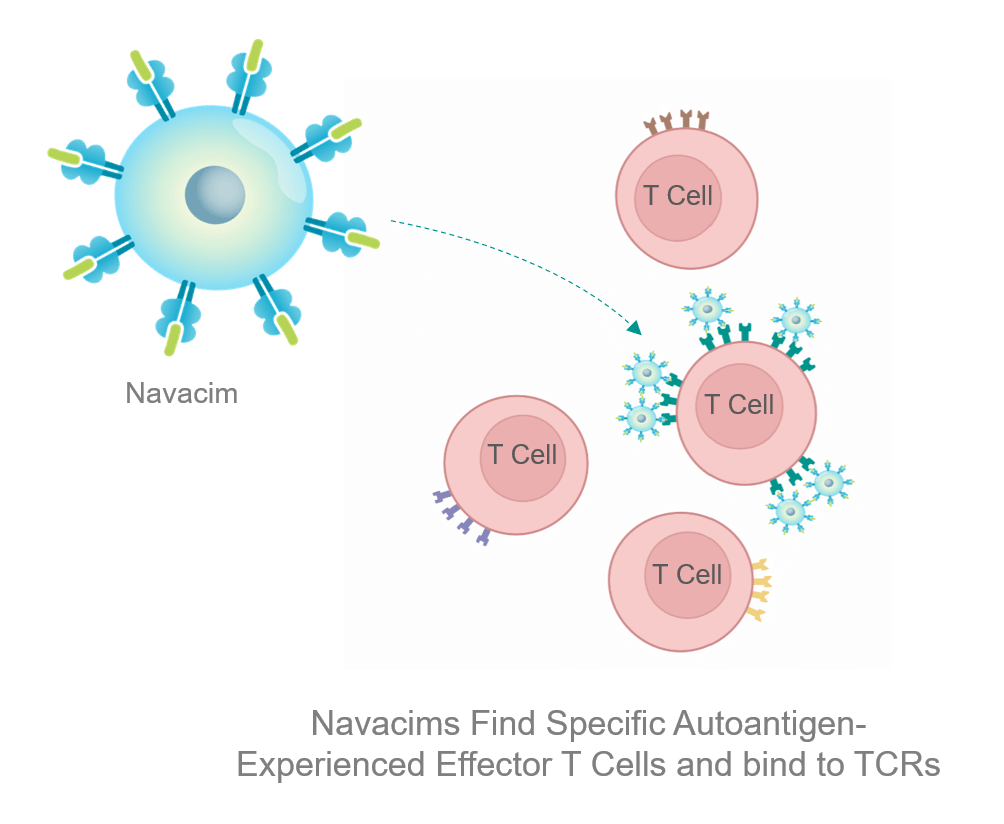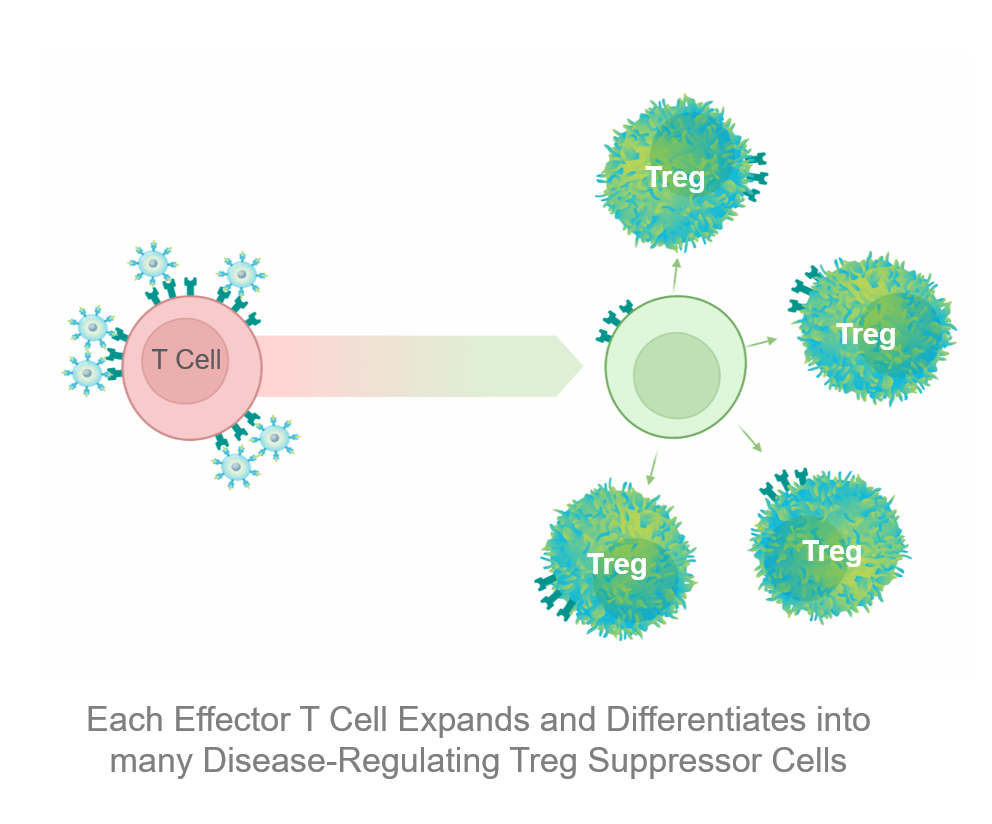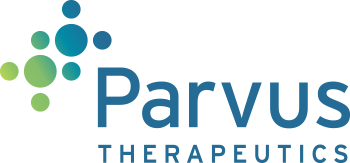Reverse autoimmune disease by reprogramming disease-causing immune T cells to differentiate and expand into disease-regulating Treg cells
Autoimmune disease accounts for approximately 100 different diseases in which the body’s immune system improperly attacks and destroys a patient’s own tissues due to a loss of immune tolerance. There is currently no cure for this group of diseases, and current treatments are directed toward general, non-specific suppression of the immune response, frequently resulting in unacceptable side effects such as increased risk of infection and cancer.
There is a large medical need for improved treatments that can restore immune tolerance to specific tissues without causing generalized immune suppression.

Navacims present disease-specific peptide-MHC to T cell receptors
Navacims are made with an iron oxide core nanoparticle core encapsulated with a polymer coating conjugated to a peptide-major histocompatibility complex (peptide-MHC) protein.
Navacims become pharmacologically active and organ-specific from the unique antigenic peptide selected for each Navacim.
Navacims – Enabling Disease-Specific Immunoregulation
Navacims find specific disease-causing autoantigen-experienced T cells and present a high-density array of disease specific pMHC to cognate T cell receptors (TCR). Navacim high density binding to TCR micro-clusters causes signaling which reprograms disease-causing T cells (effectors) to differentiate and expand into disease-regulating Treg cells (suppressors). The disease-specific Treg cells selectively suppress autoimmune attacks on self in the diseased organ.


A key therapeutic advantage to Parvus’ approach is that Navacim treatment effect does not require delivery of the exact multiple peptides driving the disease. Rather, Navacims with a single disease relevant peptide are broadly effective in the diseased organ. Navacims induce a massive expansion of disease-specific Tregs, and it is this expanded population of Tregs that in turn activate other immune regulatory cells (including B cells) to broadly shut down the activity of polyclonal inflammatory cells contributing to the disease.
Because Navacims act only upon the disease-related inflammatory immune cells, their biologic activity is designed to be self-limiting and sustained only until the immune system is restored to a balanced, “response ready,” immune-tolerant state. In preclinical disease models, Navacims have demonstrated broad therapeutic activity and disease reversal across a range of autoimmune disorders including diabetes, multiple sclerosis, autoimmune liver disease and inflammatory bowel disease while consistently preserving immunocompetence to resist viral, microbial, and tumor challenges.
Navacims empower a naturally occurring mechanism to suppress autoimmunity that is wired into our immune system by natural evolution to protect us against autoimmune disease. This leads to a resolution of tissue inflammation without affecting normal functions of the immune system.
